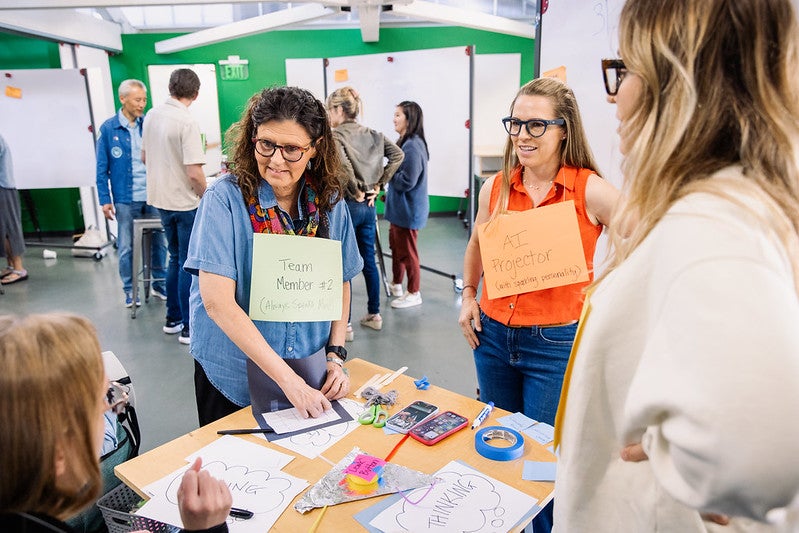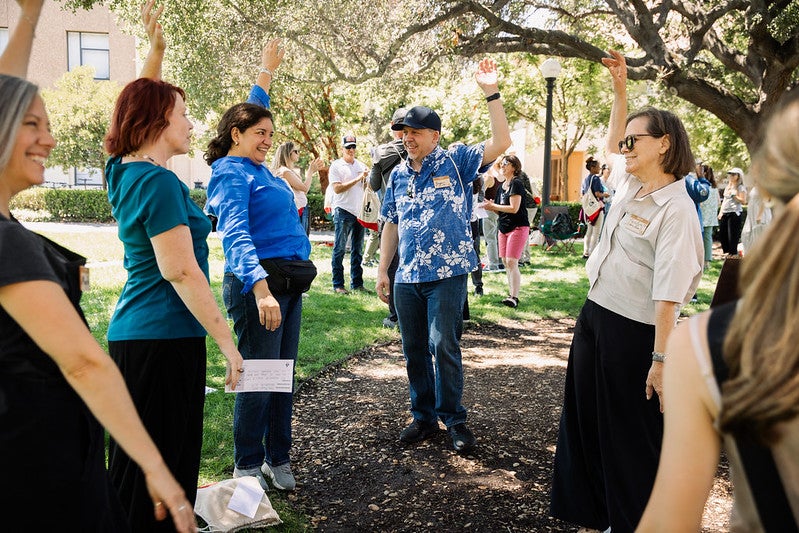Exploring the heart of innovation and human creativity

Innovation and entrepreneurship leaders from UCCS and the CU system recently traveled to Palo Alto, California, to visit Stanford University’s famous Design School (d.school), exploring the ways it approaches teaching and learning.
Led by Benjamin Kwitek, Ph.D., director of innovation and co-founder of C3 Innovation at UCCS, the contingent attending the school’s weeklong workshop this past summer also included two faculty members from the Innovation Program – Carolyn Gery, Ed.D., and Gail Richards, M.S. – and Ashley Taylor Tillman, Innovation and Entrepreneurship Initiative director for the CU system.
“David Kelly, the founder of the d.school, was right when he said, ‘Belief in your creative capacity lies at the heart of innovation,’” Kwitek said. “In a world increasingly dominated by AI, the human creativity factor needs to be emphasized. We are not robots or the Tin Man in ‘The Wizard of Oz’ – our faculty, staff and students have hearts.”
Before joining CU, Tillman belonged to the California innovation community. She worked for IDEO, a Palo Alto product design firm that also flowed from Stanford’s d.school.
“Design thinking is centered on empathy and understanding the user,” Tillman said. “CU students have incredible ideas and potential that can be unlocked to solve problems and produce innovative solutions.”
Besides CU, universities from across the country and around the world took part in the workshop. Maryland, Michigan Tech, New York University, Rutgers and Utah were among the institutions and systems with faculty and administrators present.

“The CU system is recognized as one of the leading hubs for innovation in the world,” Kwitek said. “We need to make sure we continue to learn from the best to increase our edge and fuel the economic vitality of Colorado and beyond.”
The d.school workshop provided a wealth of ideas and tools to help create new opportunities for CU, Kwitek said. Among the group’s takeaways: the re-design and three d.school principles of noticing, sensemaking and experimenting. These three steps are critical for innovation; the order of steps is not necessarily as important as just getting started.
- Noticing is about being aware and paying attention to problems in products, services and even human interactions.
- Sensemaking is about putting the puzzle together – even in an ambiguous world. What inferences can be made and how does a diverse team help reach conclusions faster were some of the key points.
- Experimenting is something design thinking is known for around the world. Like scientists in a lab, everyone can experiment in their environments. Creating prototypes or tinkering is a great way to make improvements and learn.
During their time on the Stanford campus, the CU team participated in activities including listening circles, working in teams without speaking, prototyping with elementary school supplies – and even dancing in a makeshift disco on the second floor of the Hasso Plattner Institute. After the music stopped, famous San Francisco DJ Lamont answered questions about mixing music, reading the room and providing entertainment as a tool to foster culture.
Richards was impressed with how the disco served as a metaphor for design thinking.
“It was the perfect exercise in tuning into the people around you, paying attention and responding based on what you learn,” she said.
The team will use the new Silicon Valley knowledge to help reshape courses – beginning with some from the Bachelor of Innovation core at UCCS.
Gery believes that constant adaptation is required for professors to keep students engaged.
“Our students today were practically born with a smartphone in their hands,” she said. “We need to ensure we provide education that is dynamic and relevant.”
Interested in learning more? Please reach out to Benjamin Kwitek, bkwitek@uccs.edu, or Ashley Tillman, ashley.tillman@cu.edu.


